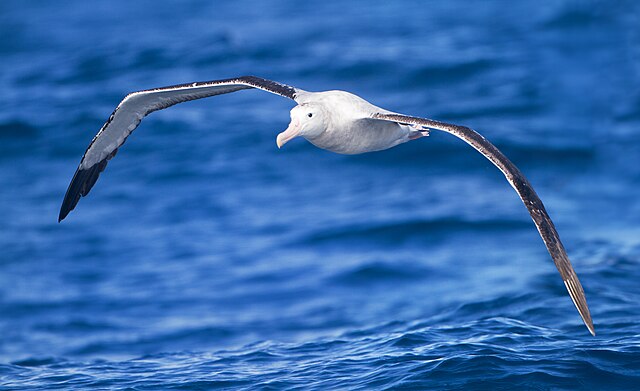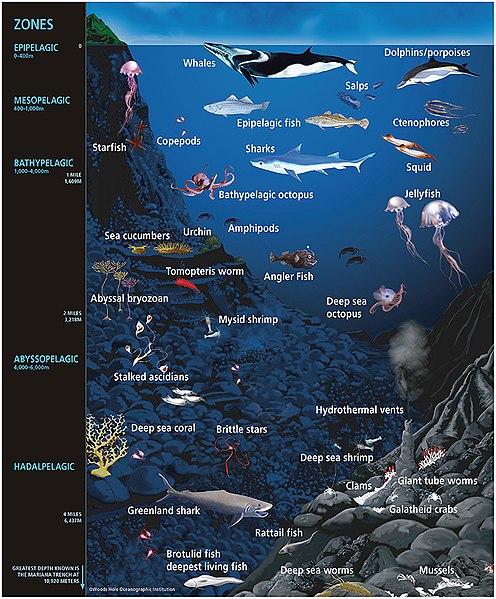The abyssal zone or abyssopelagic zone is a layer of the pelagic zone of the ocean. The word abyss comes from the Greek word ἄβυσσος (ábussos), meaning "bottomless". At depths of 4,000–6,000 m (13,000–20,000 ft), this zone remains in perpetual darkness. It covers 83% of the total area of the ocean and 60% of Earth's surface. The abyssal zone has temperatures around 2–3 °C (36–37 °F) through the large majority of its mass. The water pressure can reach up to 76 MPa.
A dense gathering of Rimicaris hybisae shrimp at the Beebe Hydrothermal Vent Field in the Mid-Cayman Rise. The shrimp are almost entirely blind, surviving at the interface of cold, deep seawater and supercritical hydrothermal fluid.
The pelagic zone consists of the water column of the open ocean and can be further divided into regions by depth. The word pelagic is derived from Ancient Greek πέλαγος (pélagos) 'open sea'. The pelagic zone can be thought of as an imaginary cylinder or water column between the surface of the sea and the bottom. Conditions in the water column change with depth: pressure increases; temperature and light decrease; salinity, oxygen, micronutrients all change. Somewhat analogous to stratification in the Earth's atmosphere, but depending on how deep the water is, the water column can be divided vertically into up to five different layers.
The pelagic wandering albatross (Diomedea exulans) ranges over huge areas of ocean and can circle the globe.
Some representative ocean animals (not drawn to scale) within their approximate depth-defined ecological habitats. Marine microorganisms also exist on the surfaces and within the tissues and organs of the diverse life inhabiting the ocean, across all ocean habitats. The animals rooted to or living on the ocean floor are not pelagic but are benthic animals.



